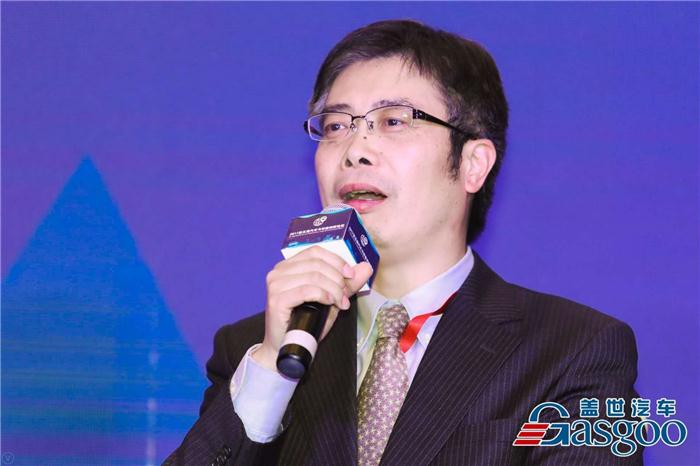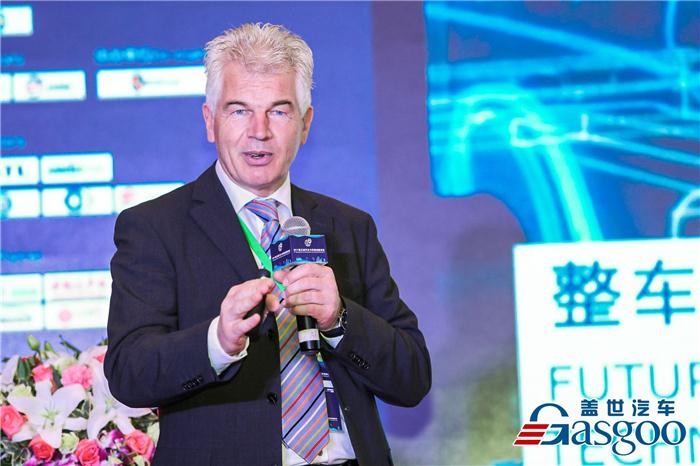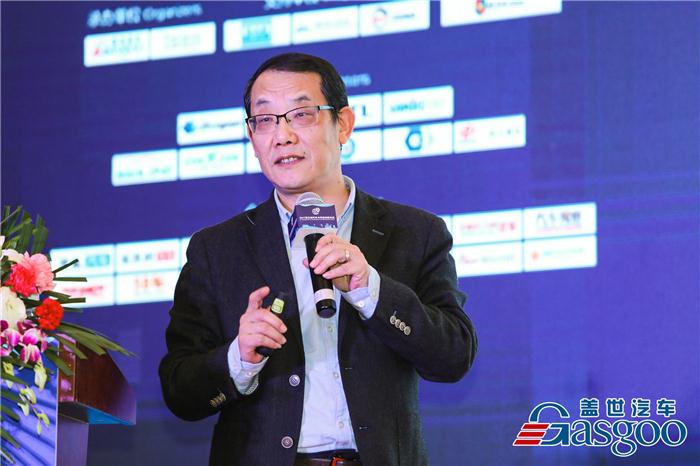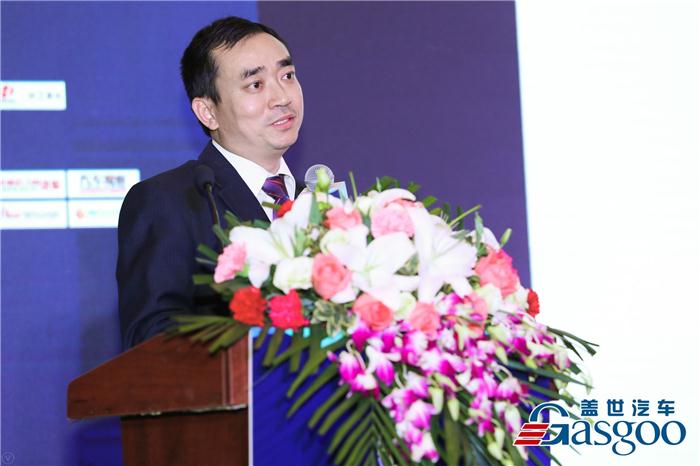ã€Automobiles and Environment】Emerging Energy Savings and Imminent Enthusiasm
"Depending on mature technologies, traditional powertrains still have about 30% reduction in fuel consumption. If combined with the promotion and application of lightweight technologies, there is room for further reduction in fuel consumption. As a necessary technical measure to help achieve fuel consumption targets in various automotive markets, Parts companies can follow the trend and be a good opportunity for companies to transform themselves into innovations.†At the Energy Conservation Sub-Forum of the Automotive and Environmental Innovation Forum on December 9th, President of Hansen Technology and the National “Thousand People Project†Specialist Expert Xin The military said. In recent years, developed countries such as Europe, the United States, Japan, and the United States continue to increase the fuel consumption requirements of passenger vehicles through technical standards and regulations. With the continuous improvement of China’s laws and standards for energy conservation and consumption reduction, China will introduce new energy vehicles in the future. It is also necessary to drastically increase the fuel economy of vehicles and further reduce CO2 emissions. Therefore, automobile energy-saving and emission-reduction technologies have become a hot spot for car manufacturers. Dongfeng Motor: Building a symbiotic energy-saving framework to achieve a safe, energy-efficient and smart transportation system High-efficiency engine is the core technology for achieving low-carbon energy saving. According to Zhou Jianguang, vice president of the Dongfeng Technology Center and a special expert of the National “Thousand People Projectâ€, the technical upgrading of the powertrain is a permanent theme, and he has saved energy in the Automotive and Environmental Innovation Forum. According to the sub-forum, the traditional powertrain upgrade is a task that must be done for a long time to come and is a very effective way. Traditional engines do not disappear by 2025 or 2030. Traditional powertrains will exist for a long time, and the upgrading of the powertrain will be a tireless pursuit. “In the future, the automobile will be transformed from a simple vehicle to a carrier for intelligent terminal services. The symbiotic transportation mode will gradually form. By building a symbiotic energy-saving framework, the automobile can be transformed from a single sports individual to an integrated sports group. It will realize a safe, energy-saving and smart transportation system." Dongfeng Technical Center Deputy Dean and National "Thousand Talents Plan" Specialist Expert Zhou Jianguang Zhou Jianguang believes that if several key words are used to summarize engine technology, the key word for upgrading the powertrain of a traditional engine is two words: variable. With variable technology, the efficiency of the powertrain will increase very quickly. Dongfeng Motor Co., Ltd. has continuously exerted its efforts on the research and development of powertrains. Currently, it has formed three series of engines ranging from 1.0 to 2.0 liters of ABC. It is equipped with DF1 and DF2 platforms and is currently in volume production. At present, Dongfeng is working on the development of a variable compression ratio technology engine, which will be promoted to the Chinese market in late 2018. Before that, prototype ignition has been realized in May 2017. The next step will be to develop the performance. The preliminary test results show that the engine thermal efficiency reaches 40%, and the area with the best fuel consumption point is very large. In the future, the engine can achieve very good fuel consumption for the actual road conditions of RDE. In addition to traditional engines, Dongfeng also does hybrid and new energy, and now has technology reserves such as hybrid and pure electric vehicles and core components. In the research and development of new energy powertrains, Dongfeng Motor Co., Ltd. began research and development of fuel cells from 2016 and plans to develop the first 30-kilowatt 40-kilowatt half-powered fuel cell prototype vehicle by the end of 2018 to 2019. In respect of smart emission reduction, Dongfeng Motor Co., Ltd. improves the energy-saving effect through the development of intelligent vehicles. Through the adjustment of the ADAS algorithm on the installation of smart-drive-assisted vehicles, fuel consumption is reduced without increasing the cost of hardware. The specific approach is to collect traffic conditions and road conditions such as the slope of the road, traffic conditions, etc., and adopt control strategies with predictive functions to increase economic efficiency. The actual road RDE test results show that on a relatively smooth road can save 4%-5%, congested roads to achieve fuel economy 8%-10%, comprehensive road fuel economy 7%-8%, while the use of hybrid power Achieving a 1% energy saving cost is much higher than this. SAIC Passenger Vehicle: Based on mainstream small-capacity booster, continuous technology upgrade and electrification Director of SAIC Passenger Vehicle Technology Center, Xu Xiang, Special Expert of the National “Thousand Talents Program†Based on the challenges faced by 2020, SAIC Passenger Vehicle will launch a blue core power system and further reduce fuel consumption through technology upgrades. Xu Zheng, director of the SAIC Passenger Vehicle Technology Center at the Energy Conservation Sub-forum of the Automotive and Environmental Innovation Forum, and the country’s “Thousand Talents Program†expert expressed that the next phase will address the requirements of China’s 4th and 5th stage fuel consumption regulations, as well as the country’s 6th and EU’s 6D, WLT, RDE test conditions, electrification and hybrid demand, will be updated technology will be applied to the product quickly after 2020, the most important is the variable compression ratio. “The current period of change will definitely have a profound impact on the development of power systems. Diversified power systems will coexist for a longer period of time. From the current engine point of view, we will base our efforts on the mainstream of small-displacement supercharging technology. , continue to do technological upgrading and electrification, and continuously improve efficiency to meet consumer demand." The power system is the core technology and needs a complete R&D system to support it. This is also a major bottleneck that the self-owned brands usually encounter during the early development stage. SAIC Motor has established a relatively complete R&D system through years of continuous efforts. Xu Zheng admits, "Our core competitive system is very similar to the mainstream OEMs in the world, including the support from project management to ontology design and development, simulation support, test development, electronic control, standard software engineering, and power system and vehicle integration functions. We also have a very close relationship with manufacturing and quality assurance. We have a series of support for hardware and software infrastructure and standardized manuals." Roewe i6 blue core SGE 20T engine as one of the "China Hearts" annual top ten award-winning engine this year, in terms of power, has a maximum power of 169 horsepower, a maximum torque of 250 Nm, and fully surpassed the mainstream joint venture brand 2.0L engine. In terms of technological advancement, Roewe's i6 blue-core SGE 20T engine adopts a series of advanced technologies such as GDI (injector neutral injection), HPI (6-hole high-pressure injection), and TURBO (exhaust turbocharger), resulting in more efficient technologies. The dynamic performance. On the straight-line performance road of 6.3km, the Roewe i6 is far ahead of other models in terms of acceleration performance, response speed, etc., and has excellent power performance. In respect of energy saving and emission reduction, the Roewe i6 blue-chip SGE 20T engine adopts a mid-mounted direct injection technology. Compared with the direct-injection engine used in direct-injection engines of many joint-venture models in its class, it can more precisely control the injection and intake air mixture. The oil and gas mixture is more even and full, achieving more efficient combustion, lower fuel consumption and emissions, leading to 20% fuel economy, and easily helping consumers “to save moneyâ€. The Roewe i6 also received the Guinness Book of World Records certification with a fuel consumption of 2.99L at the limit of 100 kilometers, demonstrating superior fuel economy. AVL: Future Direction of Power Drive System Technology for Passenger Cars Abert Hubert FRIEDL, Senior Product Manager, Gasoline Engine Power Systems, Passenger Vehicles Judging from the current car ownership, there will be 100 million internal combustion engine vehicles by 2025, of which 50% will contain a certain degree of electrification or mixing, which has a positive effect on the current development of various energy-saving emission reduction and power systems. In view of this situation, referring to the current trend of the entire vehicle and powertrain, Hubert FRIEDL, senior product manager of AVL passenger car gasoline engine power system, expressed at the Energy Conservation Sub-Forum of the Automotive and Environmental Innovation Forum that reducing CO2 emissions has become an important issue. The work was put on the agenda by all vehicle manufacturers. Due to the increased boundary conditions (such as WLTP), the CO2 limit was more stringent. For the model, the electrification of the model was appropriate, and the new type of internal combustion engine and gearbox were not forgotten. There were many Can improve the space. “Reducing emissions is a very popular saying in Europe. After the diesel gate incident, everyone is more concerned with the RDE of real road tests. They want to have zero impact on the environment and avoid any internal combustion engine in the environment under any operating conditions. Impact and pollution, this is the ultimate goal of the future." Natural gas, electric energy, and fuel cells are all new areas of concern. China introduced laws and regulations on new energy vehicles. China’s 6B regulations are earlier and more stringent than expected. Considering that there may be some challenges that may be faced in the future, the fuel consumption target may further tighten and the scope of measurement of particulate matter will change. Small, RDE is an important driving force for the development of powertrain technology, has a very strong role in promoting the development of gasoline engines, to the next year, all gasoline engines may have to add particulate indicators. The United States has already increased actual testing of different working conditions. In real environments such as suburban roads and urban roads, the working conditions have become more complex. Road conditions, driving style, environmental factors, temperature, humidity, and altitude have all been taken into account. These are included in the RDE test environment conditions. It is a great challenge to reflect the emissions achieved under different driving environments and driving styles, and to meet the standards. RDE is not only a topic that is being discussed in Europe, it will also be introduced into China and other countries in the world. There will be many turbocharged engines in the internal combustion engine to better meet the requirements of RDE and other laws and regulations. Every year, we will make technical upgrades, including emission reductions. Combining it with other types of vehicles to reduce emissions, including of course powertrain components, will also become increasingly important. The power of the hybrid system will increase, and the power will increase from 15 kilowatts to 20 to 30 kilowatts, mainly 48 volts, to achieve a balance between cost and power. For the direction of the traditional powertrain Hubert FRIEDL believes that "the current optimization of the entire engine and internal combustion engine, there are many optimization directions, such as variable valve and boost optimization, variable compression ratio is also very promising technology, It's not that all technologies are done in one breath, but step by step, truly turning our energy-saving future into reality." Jiangsu Shanghuai Power: High-performance natural gas engine for clean low-carbon automotive power Chairman of Jiangsu Shanghuai Power Co., Ltd., and the national "Thousand People Project" special expert Han Zhiyu Natural gas energy is a high-quality, high-efficiency, green, clean and low-carbon energy source. It is the only way for China to steadily advance the energy consumption revolution, build a clean, low-carbon, safe, and efficient modern energy system, and it is also a reality for effectively controlling atmospheric pollution and actively responding to changes in climate and other ecological environmental issues. The 13 ministries and commissions including the National Development and Reform Commission have issued "Opinions on Accelerating the Use of Natural Gas". In response, Han Zhiyu, chairman of Jiangsu Shanghuai Power Co., Ltd. and the national “Thousand Talents Plan†special expert, has his own opinions. He pointed out at the Energy Saving Sub Forum of the Automotive and Environmental Innovation Forum that “The main component of natural gas is methane, and its molecular formula is CH4. With the same calorific value, the use of natural gas reduces the carbon dioxide produced by burning gasoline by 20.6%. At present, there is no technology that can reduce carbon dioxide by 20.6% at a relatively low cost.†The basic features of natural gas as a vehicle fuel include: clean combustion, low harmful emissions, no particle emissions, low carbon dioxide emissions, better engine design using combustion characteristics, high octane number, and high compression ratio. Regarding the problem of declining momentum in natural gas, Han Zhiyu pointed out: “This is a misunderstanding for many people. In fact, this is not the shortcoming of natural gas itself. It has to occupy part of the air and enter the tank. It is not caused by fuel combustion. It is like we enter the door. The three of us went out to bring a bit of oil to the car. We needed to add some space to another person to go out. The inflating efficiency was low, resulting in a drop in power. The temperature, exhaust temperature, and heat load should be reconsidered. Our practice is to develop high performance. Natural gas engine." The features of the high-performance natural gas engine include exhaust gas turbocharging, natural gas MPI+gasoline MPI, equivalent combustion, three-way catalytic post-treatment, single-ECU control of two kinds of fuel injection, natural gas injection pressure of 8bar, compression ratio of 12 and 15L fuel tanks, and the like. "Why MPI? According to regulations and European practice, we don't have more gas stations at the gas station. We allow you to install a fuel tank and do a legal certification to only assess your natural gas. Suppose you follow the natural gas assessment in terms of dual fuels and more than one tank. Enforcement in our country is becoming increasingly stringent and is not allowed, and regulations will be treated as a single raw material.†Due to the low inflation efficiency, the power is affected. As a result, a series of optimizations have been made to Shanghuai Power. The patented design of the asymmetrical gas distribution system (AVT technology) has been adopted to increase the low-speed output torque of the engine. In addition, the Shanghuai Power Co., Ltd. conducted a multi-cycle, multi-cylinder, and full-composite experiment to test the influence of natural gas on the gas mixture. It was found that the ejector installation angle had less influence on the uniformity of the gas mixture than the injection time, and it was multi-cycle. Han Zhiyu frankly stated: “Natural gas is a realistic low-carbon technology for automobiles. We should not adopt a single energy technology in the vast land. Instead, we should adopt a multi-dimensional automobile energy policy of “oil, gas, and electricityâ€. I think that in the past 10 years, It is most likely to use "oil, gas, and electricity" for 20 years." JAC Engine: Development Analysis of Direct Injection Gasoline Combustion System JAC Engine Performance Development Director Chen Hao JAC's pure electric cars and SUVs have been developed to the seventh generation. Hybrid MPVs are also officially released at this year's Guangzhou Auto Show. Currently, they have been trial-sold. The fuel consumption per 100 kilometers is more than 7 liters. The power system uses GDI engines and has excellent performance. Jiang Huai, Director of Performance Development at JAC Engine, explained the combustion system development process of the engine at the Energy Saving Sub Forum of the Automotive and Environmental Innovation Forum. The traditional programs for the development of direct-injection gasoline engine combustion systems include spray characteristics testing, spray model calibration, in-cylinder oil and gas hybrid CFD calculation, in-cylinder combustion and emission CFD calculation, optical engine testing, in-cylinder flow field verification, and bench test verification. These are Direct injection gasoline engine combustion system development difficulties. Chen Hao said, "The oil and gas mixture is not done well, and there are problems with electronic control. We think from the source hardware itself, if you want to mix oil and gas, the most important thing is the fuel injection steam path, you must have a very strong CAE analysis function. If you want to analyze well, experience and model must have, but also measures, such as spray, flow field testing, etc." After several years of development, Jianghuai has developed a mature development process. “We have summed up a few experiences. The design must be active. First, there must be a design scheme for the combustion system, such as how much the air-flow tumbling ratio is. This program is then provided to the CAE analysis department. Tests, such as spray and engine tests," Chen Xi said. "We developed this engine and designed our own optical engine. The optical engine was designed and manufactured. The CAE started normal analysis, and then made a design, followed by a whole design. Machine development, many companies have done this step, the back is very clear, the hardware selection is over, followed by the normal target." Chen Hao said that the injector spray parameters test can well support the establishment and calibration of the spray CFD model, the optical engine cylinder flow field and oil and gas mixture test can be a good standard cylinder gas CFD model, so that CAE calculation accuracy A significant increase; optical engine test can intuitively find the cylinder gas flow field, oil and gas mixture and combustion specific conditions, can accurately calibrate the CAE model, check the engine all working conditions, and then quickly find and improve the problem; The CFD analysis is performed simultaneously with the spray and optical engine tests to avoid incomplete model calibration data due to missed measurements, which can further improve the efficiency and accuracy of CFD model calibration. Beer Fermentation,Stainless Unitank,Conical Unitank,10Bbl Stainless Fermenter WeBrew , https://www.thewebrew.com
![]()

![]()


